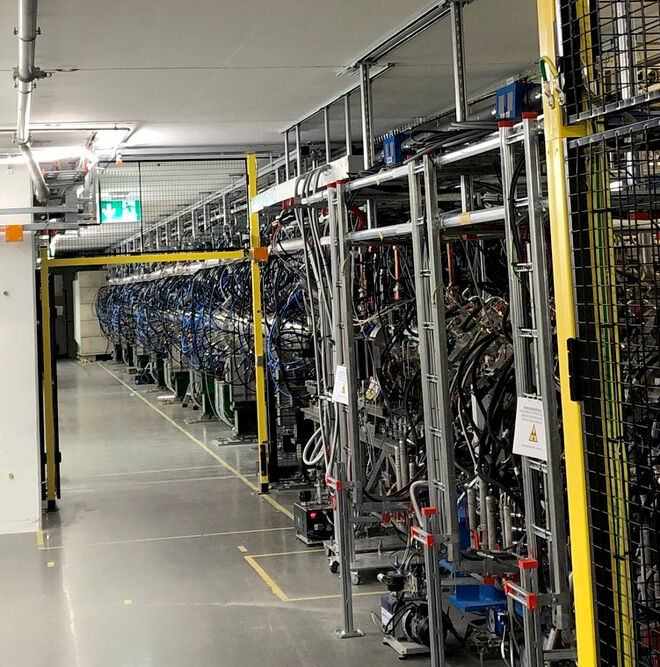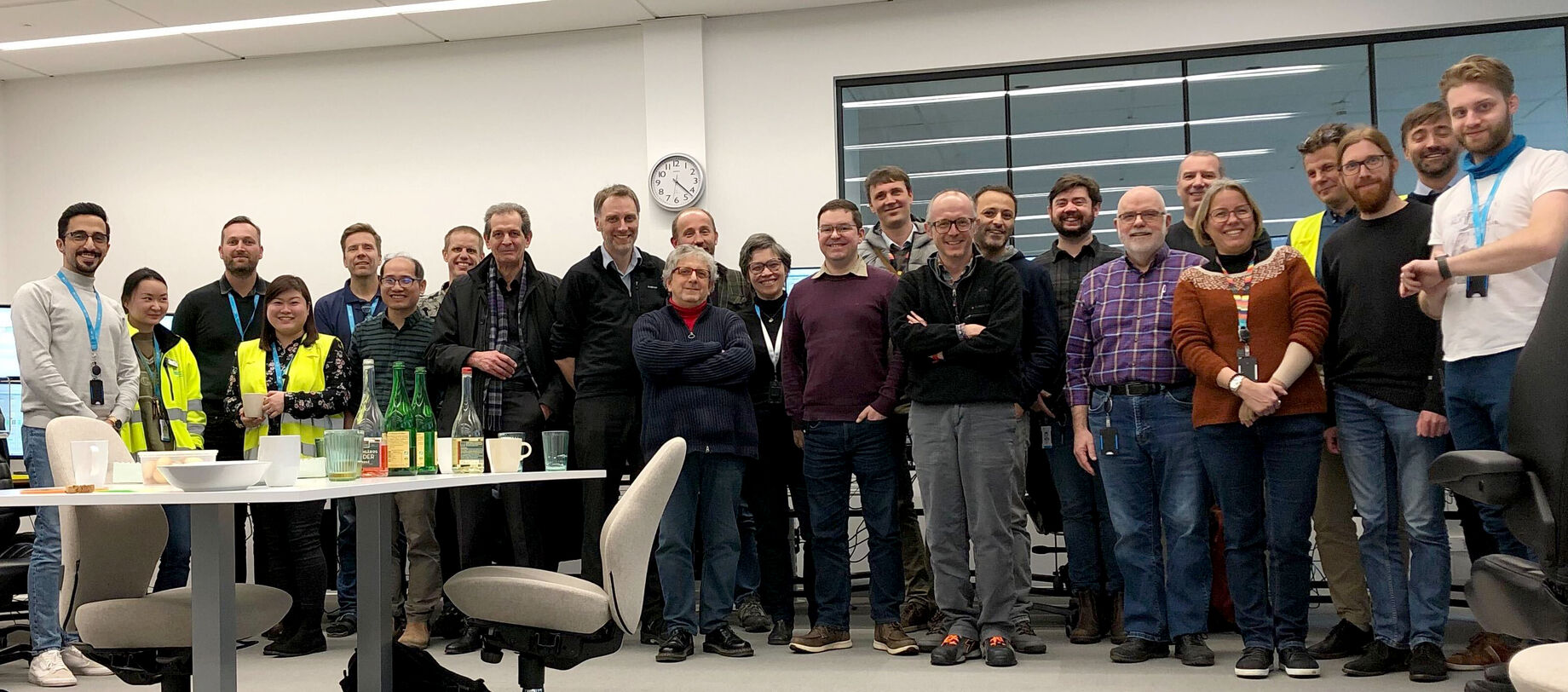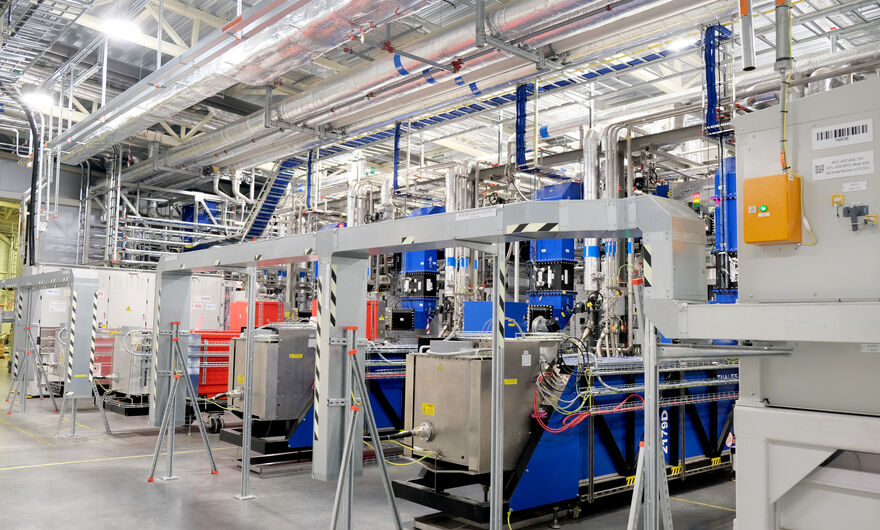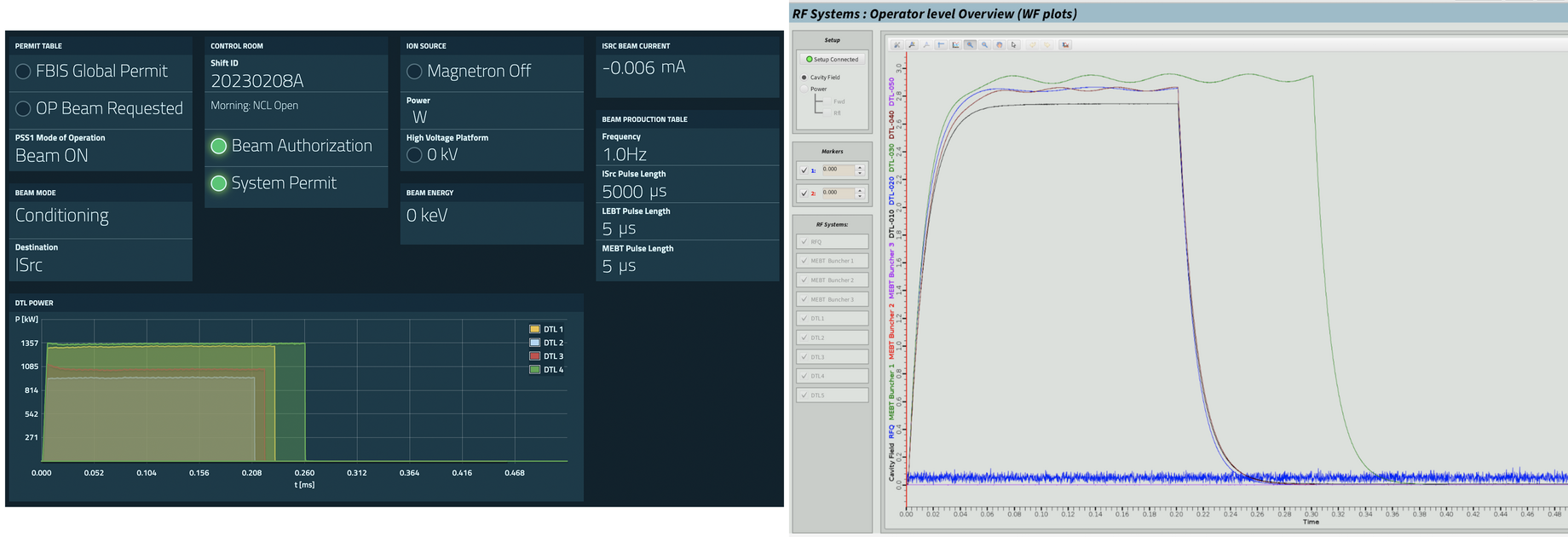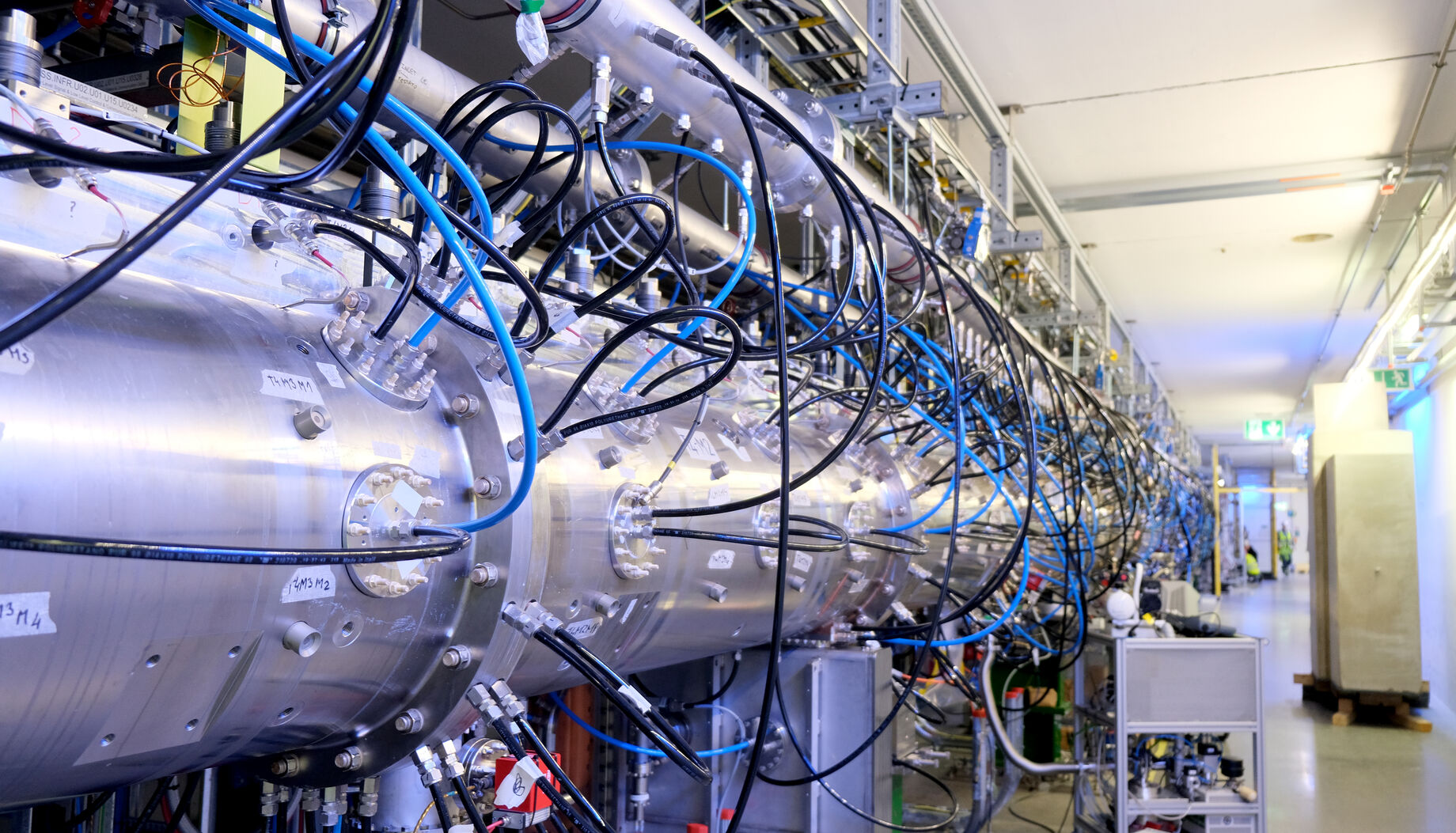
RF conditioning of the ESS Drift Tube Linac (DTL) has started in the Normal Conducting Linac (NCL). This is an important step towards the next phase of beam commissioning, which will involve sending the proton beam through the first 40 metres of the ESS Accelerator.
RF conditioning is the process of feeding cavities with slowly increasing radio-frequency (RF) power, until the nominal accelerating field gradient is reached and is sufficiently stable for beam acceleration. For the DTL cavities, the requirement is 3 MV/m at 14 Hz and 3.2 ms. Last week saw the first RF pulses sent to DTL tanks 2, 3 and 4, after several months of installation and testing as well as to tank 1 that was already tested with beam in 2022.
The now ongoing RF conditioning of DTL tanks is a crucial step in making the NCL ready for beam and will continue until April. The routine for conditioning, which also includes testing of all safety functions, the vacuum, water-cooling and RF systems, as well as the control systems and software, was developed and tested when DTL1 was conditioned last year and will continue to be optimised in the coming weeks.
Beam commissioning – where the proton beam is to be sent from the Ion Source up to a shielded collection vessel, a so-called Faraday Cup, placed after DTL4 - is expected to start in April and be completed this summer.
The fifth and last DTL tank will be installed after the summer, and will be tested with beam together with the superconducting linac.
The Drift Tube Linac is an in-kind contribution from Italian partner INFN (National Institute of Nuclear Physics). It consists of five tanks designed to accelerate the proton beam from 3.6 to 90 MeV. INFN designed and built the ESS DTL, assembled and tuned it in a designated workshop on the ESS site and are also an integral part of the installation, testing and commissioning activities, together with the ESS Linac Group and other key teams in the Accelerator Division, as well as the Operations team and numerous support functions across ESS.

























